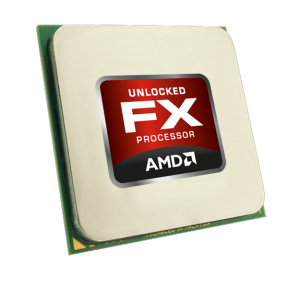 If you were an AMD enthusiast exactly one year ago, you were crashing from the hyped-up excitement of the chip that was going to put AMD back on the map. By late October of 2011, Bulldozer had appeared and the reviews were almost universally bad. AMD fans had desperately wanted a chip that was going to unseat Intel’s tick-tock Core i7. They wanted a repeat of the Athlon 64 underdog story. Even non-fanboys were excited to see what AMD would come up with, because competition is good for all of us.
If you were an AMD enthusiast exactly one year ago, you were crashing from the hyped-up excitement of the chip that was going to put AMD back on the map. By late October of 2011, Bulldozer had appeared and the reviews were almost universally bad. AMD fans had desperately wanted a chip that was going to unseat Intel’s tick-tock Core i7. They wanted a repeat of the Athlon 64 underdog story. Even non-fanboys were excited to see what AMD would come up with, because competition is good for all of us.
None of that happened.
AMD FX-8150 performed more slowly than even its predecessor Phenom II in some scenarios, and definitely under the Core i7 by almost every measurable metric.
It was a flubbed launch. Fingers were pointed, with at least one former AMDer claiming that engineering was sloppy, management was bad, and there were mistakes made at every level. Accusations were made that entire sections of the CPU die were cut-and-paste jobs rather than being hand-engineered. AMD has been suffering as a company since the Bulldozer launch (though that cannot be attributed to just one CPU launch), with one massive layoff hitting the company last year and another one looming this week.
Still, many felt that AMD’s new architecture was sound and that it was software and “point of view” that was the issue. Windows 7’s thread scheduler was found to not play well with Bulldozer’s unique core architecture (two cores share L2 cache, and there are four modules of two cores each), and hotfixes were issued that improved performance a bit, but not much.
The FX-8150 was not a bad chip, by any means. Eight cores is nothing to sneeze at, and the FX-8150 will still handily tackle almost any task you throw at it. However, the 8150’s day has passed, as today we’re looking at the next generation of AMD’s FX chips: the Piledriver core. We got a sneak preview of the Piledriver cores (albeit in a low-power, lower clock speed package) with Trinity APUs, but now we’ll be able to see how well Piledriver works as an unleashed mainstream desktop CPU.
Will Piledriver be the earth-mover that Bulldozer was supposed to be? Let’s find out.
Architecture and Price
AMD FX-8350 is the top of the heap for the Vishera platform, which includes four models: FX-8350, FX-8320, FX-6300 and FX-4300. The FX-8350 takes the same Piledriver cores that are in the Trinity APUs, but doesn’t have to hobble them with power and GPU concerns; this is a pure desktop chip, and thus the TDP has been increased to 125w while the clock speed hits 4ghz with a 4.2ghz turbo boost. Vishera remains built on a 32nm process and has 8mb L2 and 8mb L3 cache at its disposal. You’ll notice that the TDP and cache are the same as Zambezi (AMD FX-8150) because these are still built on a 32nm process node.
The really good news (and a smart move on AMD’s part) is that the MSRP on the top-end Vishera chip is $195, which is much more reasonable than the $245 that Bulldozer debuted at last year. This puts it square into competition with Intel’s Core i5-2500K. All four Vishera FX chips are compelling in the regard that they offer more cores than their competition. At the bottom end, the FX-4300 is also a compelling chip, as it puts four Piledriver cores at 3.8ghz into a $122 package.
Vishera remains on Socket AM3+, which is another bit of good news for AMD fans; anybody with a socket AM3+ motherboard simply needs to update the BIOS and this chip will be supported. 990FX remains the chipset du jour for AMD enthusiasts, and there are a raft of tried-and-true, mature motherboards that support the platform and give clear advantages over their Intel equivalents, primarily in PCI express lanes and SATA support.
Benchmarks
Our testbench system is based on the Gigabyte GA-990FXA-UD7 motherboard. We are using 16gb of AMD Memory-branded DDR3 (Patriot), an OCZ Vertex 3 SSD, and a SAPPHIRE Radeon HD 7870. This is also our first official review on Windows 8 Pro. We used AMD Catalyst 12.11 beta drivers for all testing. We ran each benchmark at stock speeds and also at a conservative 4.4ghz overclock, just to show what kind of performance gains can be had with some tweaking.
AIDA64
AIDA64 provides pure synthetic benchmarks for a variety of system components, but we’ll be focusing on the CPU numbers.
Vishera’s numbers are exactly in line with what we expect: An evolutionary jump over FX-8150, while slightly lagging behind Core i5-2500K. Single-threaded performance is still Intel’s strong suit.
First up we have the CPUQueen test. From the AIDA64 website: “This simple integer benchmark focuses on the branch prediction capabilities and the misprediction penalties of the CPU. It finds the solutions for the classic “Queens problem” on a 10 by 10 sized chessboard. At the same clock speed theoretically the processor with the shorter pipeline and smaller misprediction penalties will attain higher benchmark scores.”
The Core i5-2500K and 8350 are essentially neck-and-neck in this test, with the Core i5 pulling ahead by the most miniscule margin; the story, however, changes when we start overclocking the 8350.
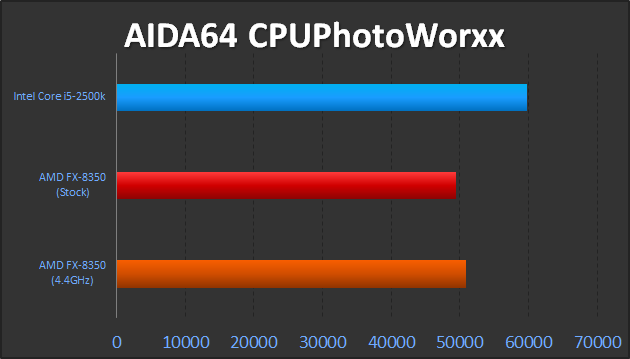
In any test that measures true multi-threaded performance, Vishera should pull ahead by virtue of it’s double core count over Core i5. The ZLib test is fully multi-threaded, which proves out the clear core advantage of Vishera.
In the AES test, the Core i5-2500K essentially crushes Vishera, even overclocked. Both Vishera and Core i5 support AES-NI instructions, so this test is hardware accelerated, but the single thread performance of the Core i5 wins the day again. Regardless, neither platform will choke on encryption tasks (such as TrueCrypt).
Finally we have the CPUHash test, which once again shows the commanding lead that twice as many cores earns you in true multi-threaded applications.
From this series of benchmarks we can see that thread-for-thread, Vishera is still behind Core i5… but those four extra cores definitely count for something, and in multithreaded apps, Vishera wins the day.
DirectCompute
DirectCompute is a Microsoft API that allows applications such as games to quickly access parallel processing hardware. The benchmark measures a lot of quick data manipulation using FFT (Fast Fourier Transform) and memory transfers.
The 8350 beats its predecessor decisively.
SiSoft Sandra
SiSoft is another synthetic benchmark suite that runs every aspect of the system through a range of tasks.
We used this test to show what kind of performance gains can be gotten through overclocking. We put the stock 8350 @ 4ghz up against the mildly overclocked 4.4ghz 8350:
wPrime
wPrime calculates square roots and is used as a standard for benchmarking CPUs on pure processor and multithreaded performance. Even twice the number of cores can’t touch the raw thread performance of the 2500k in this test, though (lower is better):
There are other benchmarks such as PCMark 7 and Cinebench, but they all tell a similar tale: software that uses multithreading sees a big benefit from the eight Piledriver cores, but thread-for-thread, Intel still has a commanding lead on raw number-crunching performance.
Folding@Home Performance, temps, and power draw
Of special interest to the Icrontic community is Vishera’s performance in the Stanford University Folding@Home project. Folding@Home uses all available cores and benefits greatly from having access to as much parallel computing power as possible. It pushes CPUs hard, cranking them to 100% at all times, so it’s also a good way to test the full power draw of a computer. Since the CPU is running at full throttle, it’s also a good way to test temperatures.
At stock 4ghz, we measured 90w idle power with external meter and 33c using a Thermaltake Water2.0 Performer CPU cooler. After starting F@H and letting it run for five minutes, we measured again and marked 222w power draw for the entire system at full load. The highest temperature recorded was 52c but most of the time it hovered between 49 and 50. Estimated points-per-day on Project 8049 was 16157.
Overclocked to 4.6ghz, power draw at full load increased to 274w and temperatures hit a high of 59c, but stayed pretty steady at 56c for the most part.
Overclocking
Overclocking this chip is a dream. In 30 seconds in the BIOS, you can easily hit 4.6ghz with minimal effort using a solid motherboard such as the GA-990FXA-UD7. With some effort, we hit 4.9ghz on the Thermaltake Water2.0 (all-in-one liquid cooling), and can’t imagine that it would be any different with a good air cooler. At 4.9ghz, we’re seeing 12-15% performance improvements in synthetics. We were able to boot into Windows at 5ghz but couldn’t keep it stable at 100% load. With some time investment, 5ghz on air should be attainable. The refinements of the Piledriver cores really show in overclocking efforts, as large overclocks come with ease.
Conclusion
Vishera is exactly what AMD promised it would be: a 10-15% performance increase over the previous generation by almost every measure (except the all-important price!). It’s better than Bulldozer in every way, and it’s cheaper.
 The price is really what makes Vishera compelling. Even the top-end 8350 is affordable at $195, and two hundred bucks for an eight-core chip is a hard thing to argue with. Yes, it’s true you’re not going to get the thread-for-thread performance that you will with Intel peers, but there are other benefits to the AMD ecosystem that Intel can’t match, especially in the chipset realm. Power draw is slightly disappointing, but there’s just nothing for it at 32nm. AMD has to make the best of a bad situation, and with Vishera, they’ve done that.
The price is really what makes Vishera compelling. Even the top-end 8350 is affordable at $195, and two hundred bucks for an eight-core chip is a hard thing to argue with. Yes, it’s true you’re not going to get the thread-for-thread performance that you will with Intel peers, but there are other benefits to the AMD ecosystem that Intel can’t match, especially in the chipset realm. Power draw is slightly disappointing, but there’s just nothing for it at 32nm. AMD has to make the best of a bad situation, and with Vishera, they’ve done that.
An AMD enthusiast who buys Vishera, overclocks it, and builds a dedicated video processing, gaming, or Folding rig will not be disappointed.
We’re going to give the FX-8350 award one of our rare “Detroit Hustle” awards for being a great value, because this kind of multithreaded performance at this price is indeed a good value.
The Vishera line of FX CPUs is available now at Newegg.




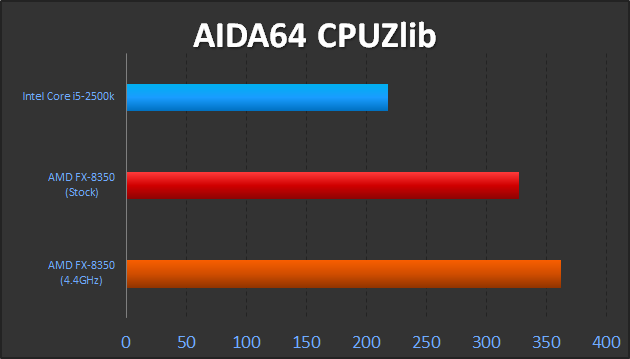
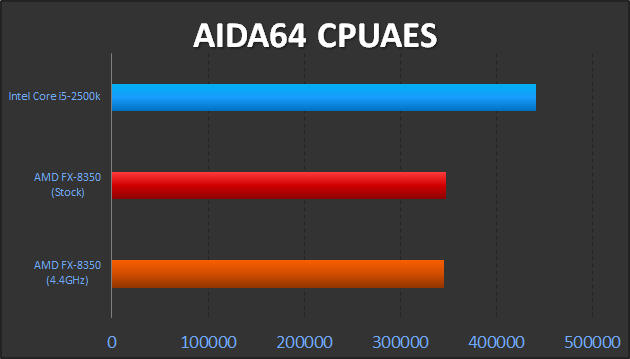
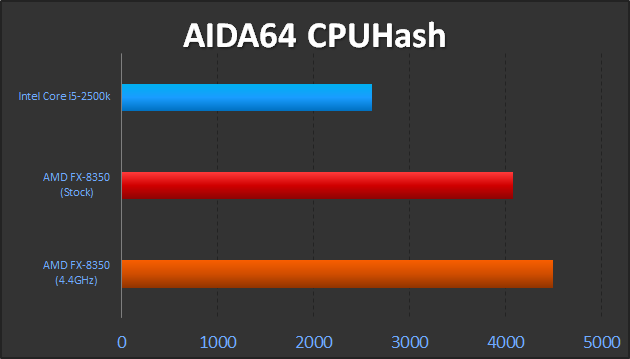
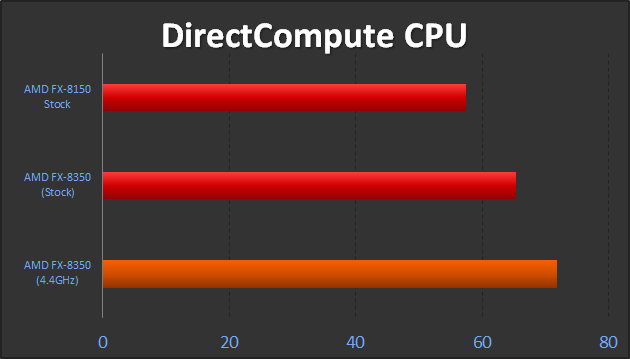
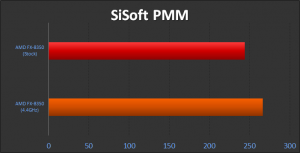
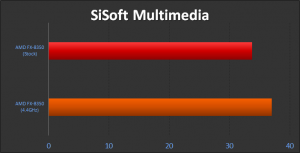
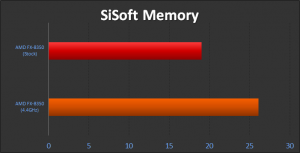

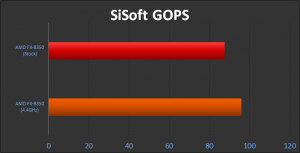
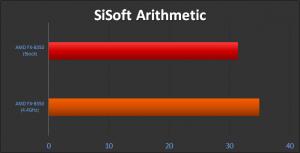
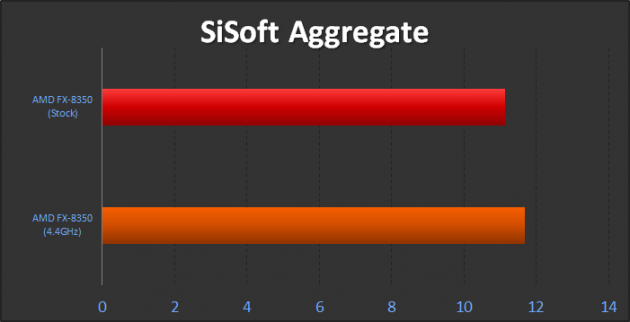
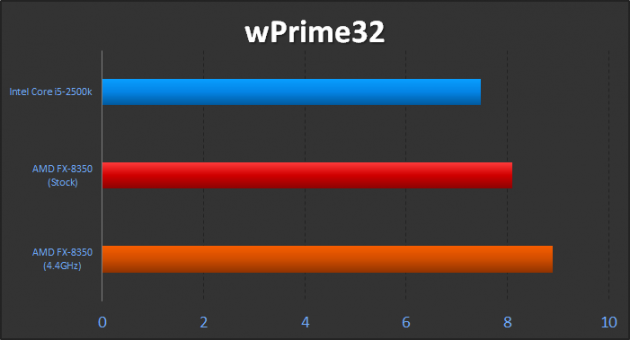










 Articles RSS
Articles RSS